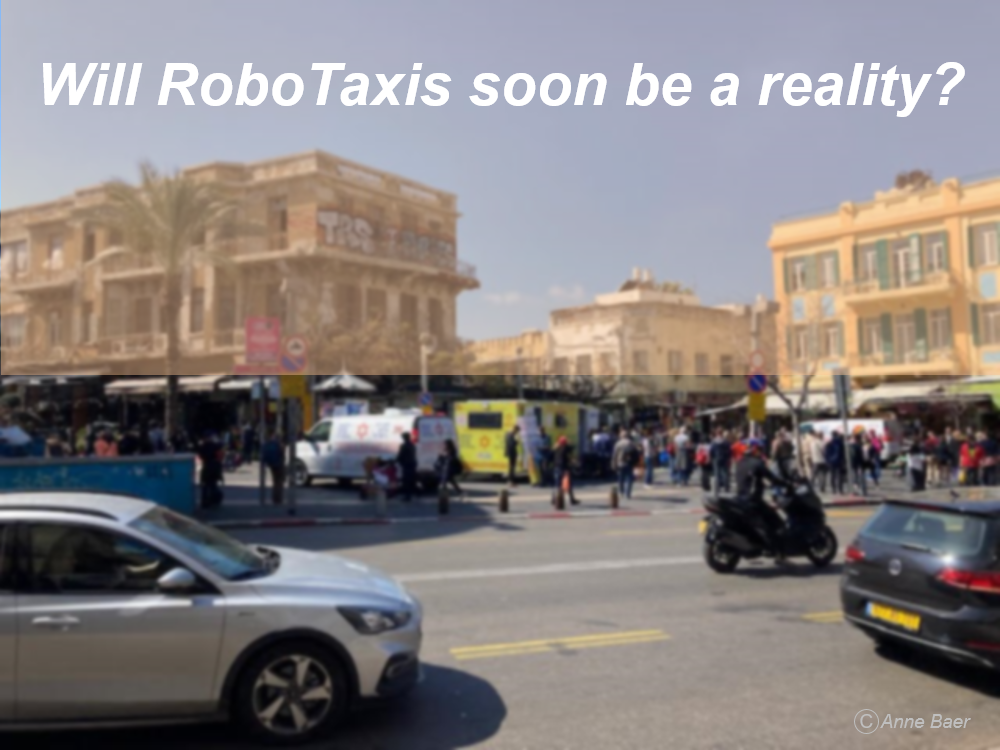 At our last InnoCherche Webinar, we challenged Meital Lehavi, Deputy Mayor of Tel Aviv-Yafo municipality for Transportation, Construction and Infrastructure with this Billion-dollar question.
At our last InnoCherche Webinar, we challenged Meital Lehavi, Deputy Mayor of Tel Aviv-Yafo municipality for Transportation, Construction and Infrastructure with this Billion-dollar question.
On top of limitations common to all countries, Israel faces unique challenges because of the centralization of its transportation policy, taxation structure, and absence of public transportation services on week-ends and holy festivals. It is a “must have” for too many to own a private vehicle. “Tax on fuel and vehicles count for up to 17% of total State income, making any green incentive quite unattractive”, notes Meital Lehavi, “On the regulatory and infrastructure side, local authorities have no power delegation from the central government, unlike other western countries.” Israel whole territory is as small as the State of New Jersey or the Ile de France region.
Despite these constraints, the Tel-Aviv Municipality is at the forefront of innovation and acts as a groundbreaking experimental laboratory for Israeli technologies for sustainable transportation. By 2030, Tel-Aviv aims at reducing private cars use from 56% to 30% of all mobility options in the city, putting the emphasis on walking (“Indeed! Safe walking for all, remains a priority in the micro-mobility mess”), biking, public and shared transportation.
Neither infrastructure for transportation nor mobility Pilots are managed at the level of the municipality, but rather by the Ministry of Transportation itself. Oded Kutok, Tel-Aviv Municipality Advisor for autonomous and shared transportation explains: “The municipality monitors and learns, and can provide basic rules such as reduced speed for schools, yet it is not responsible for the pilots.” Insurance aspects for example have to be overseen by the Ministry with the pilot owners. The municipality is nevertheless able to regulate traffic lights using AI to determine if a category of vehicle should have priority over others or not.
Regarding autonomous vehicles, three private companies are considering running pilots in the city, and will help mapping routes: the Russian Yandex, the Americano-Israeli Mobileye consortium, and the Singaporean ST Engineering. Tel-Aviv is exploring the possibility to connect the vehicles to the city’s other mobility infrastructures. As per the political vision, for Meital Lehavi, “the priority is for multi-person vehicles and carsharing, not private cars”. “The role of the municipality is to care for the interest of the public, not of the private consortia”, adds Oded Kutok.
Starting the deployment of autonomous cars with RoboTaxis rather than personal vehicles is both pragmatic and consistent with the long term vision. Shared RoboTaxis on predetermined paths should be privileged, as a first step, for an efficient and sustainable use of resources. Furthermore, it will better accommodate the public at a reasonable price.
There is another rationale for Robotaxis that may sound “surrealistic”.
Electricity being forbidden to observant Jews on Shabbat, fully automatic RoboTaxis could become a mobility solution, just like automatic elevators stopping at every floor are used commonly by orthodox Jews on Shabbat in hotels and high-rise buildings, provided that the vehicle circulates without human intervention, whatever the number of passengers, stopping at pre-established stations. “The Rabbis should declare it Kosher!”
In terms of timeline, Mobileye is planning on executing the first phase of its pilot this year, deploying NIO electric cars. They will test system safety, without passengers first, by blending itself into Tel-Aviv dense traffic, stay “harmless” for pedestrians, kick scooters, two-wheels and four-wheels’ vehicles as well as taxis and buses. For anybody who knows Tel Aviv, the challenge is that of a permanent “video game”… Mobileye will move gradually to the third phase of its pilot, with paying passengers, in 2022.
Yandex should follow by 2023.
ST Engineering already operates a NAVYA shuttle in two closed campuses, moving students around on the Bar-Ilan university campus and, since 2020, transporting medical staff, medicines and equipment in Sheba hospital, both in the periphery of Tel-Aviv.
2022 and 2023 are just around the corner. It will be interesting to observe how those projects come to fruition in the city of Tel-Aviv, and lead the way for broader adoption of new technologies and practices.
As a conclusion, Tel-Aviv reality is remarkable for the ongoing experimentations; testing technologies, trying different deployments and business models, from the individual/private to the multi-person shared mobility. Every operator can opt for its own pilot, while the city will pick what it needs from all the innovation offering, as demonstrated in the traffic lights prioritization experiment.
Anne Baer – Olivier Morisson – Bertrand Petit, InnoCherche
